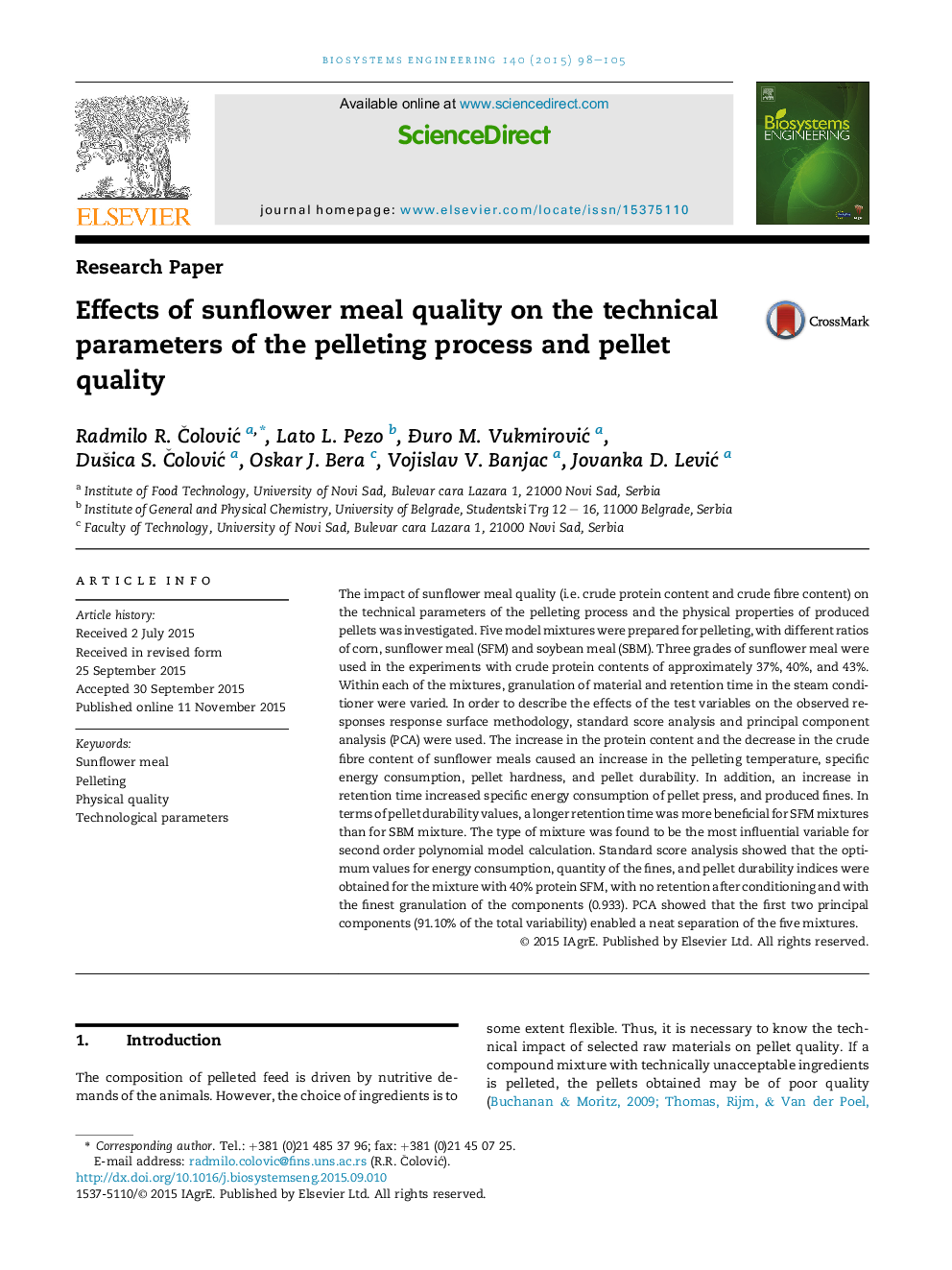| Article ID | Journal | Published Year | Pages | File Type |
|---|---|---|---|---|
| 1710911 | Biosystems Engineering | 2015 | 8 Pages |
•Effect of sunflower meal (SFM) quality on pellet quality was examined.•SFM protein content increase improved pellet durability and pellet hardness.•SFM protein content increase increased pellet temperature and energy consumption.•Energy consumption of pellet press lower when soybean meal replaced with SFM.•Longer conditioning retention time more beneficial for pelleted mixtures with SFM.
The impact of sunflower meal quality (i.e. crude protein content and crude fibre content) on the technical parameters of the pelleting process and the physical properties of produced pellets was investigated. Five model mixtures were prepared for pelleting, with different ratios of corn, sunflower meal (SFM) and soybean meal (SBM). Three grades of sunflower meal were used in the experiments with crude protein contents of approximately 37%, 40%, and 43%. Within each of the mixtures, granulation of material and retention time in the steam conditioner were varied. In order to describe the effects of the test variables on the observed responses response surface methodology, standard score analysis and principal component analysis (PCA) were used. The increase in the protein content and the decrease in the crude fibre content of sunflower meals caused an increase in the pelleting temperature, specific energy consumption, pellet hardness, and pellet durability. In addition, an increase in retention time increased specific energy consumption of pellet press, and produced fines. In terms of pellet durability values, a longer retention time was more beneficial for SFM mixtures than for SBM mixture. The type of mixture was found to be the most influential variable for second order polynomial model calculation. Standard score analysis showed that the optimum values for energy consumption, quantity of the fines, and pellet durability indices were obtained for the mixture with 40% protein SFM, with no retention after conditioning and with the finest granulation of the components (0.933). PCA showed that the first two principal components (91.10% of the total variability) enabled a neat separation of the five mixtures.
Graphical abstractFigure optionsDownload full-size imageDownload as PowerPoint slide
